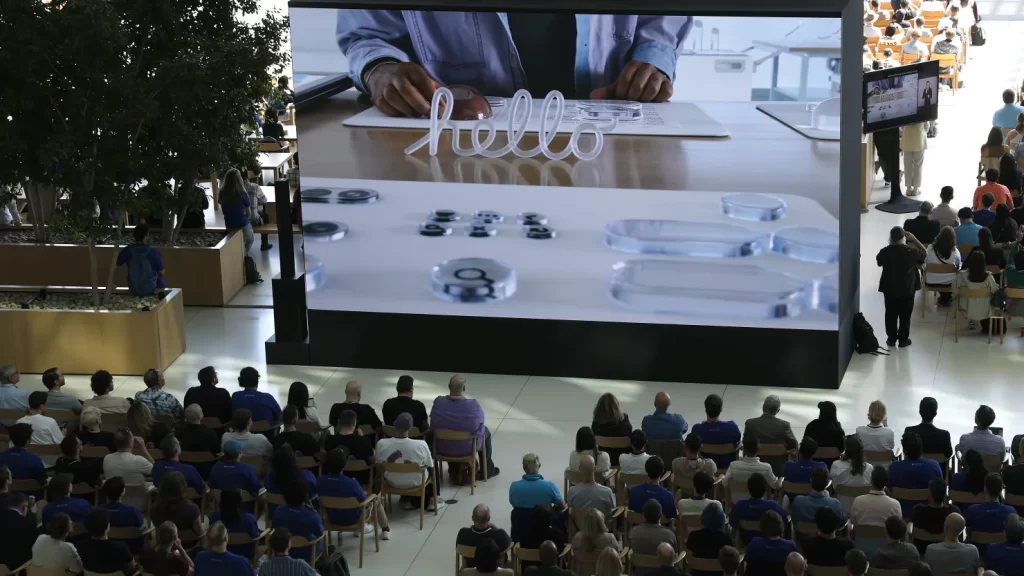At its annual Worldwide Developers Conference (WWDC) on Monday, June 9, 2025, Apple unveiled a sweeping software overhaul but fell short of delivering the groundbreaking AI advancements that many anticipated. Unlike the high-profile Vision Pro debut in 2023 or the Apple Intelligence announcement in 2024, this year’s event focused heavily on a new design language dubbed “Liquid Glass,” marking the most significant visual update to Apple’s operating systems in over a decade.

A New Look: Liquid Glass Design
The centerpiece of WWDC 2025 was the introduction of Liquid Glass, a design framework that will unify the aesthetic across Apple’s ecosystem, including iPhones, iPads, Macs, Apple Watches, Apple TVs, and Vision Pro headsets. This marks the first major redesign of iOS since iOS 7 in 2013. The Liquid Glass aesthetic features transparent, glass-like buttons and sliders, with fluid animations and rounded corners that echo the sleek curves of Apple’s hardware. For example, the iPhone’s lock screen will resemble a polished glass surface, with buttons transforming into “glass pills” that glide along “glass rails” during interactions like answering calls.
Apple attributes the feasibility of this visually intensive design to the enhanced processing power of its Apple Silicon chips. “Our chips have reached a level where we can deliver software experiences that were once unimaginable,” said Craig Federighi, Apple’s Senior Vice President of Software Engineering, in a prerecorded video. He noted that the design draws inspiration from VisionOS, the operating system powering the Vision Pro, which already incorporates a glass-like aesthetic.
The update, which will roll out for beta testing this summer and become widely available in September 2025, aims to create a “delightful” user experience, in the words of CEO Tim Cook. However, reactions have been mixed. While some fans on social media praised the fresh look, others drew comparisons to Microsoft’s Windows Vista from 2007, suggesting it feels dated rather than revolutionary.

AI Falls Short of Expectations
Investors and analysts were hoping for bold strides in Apple’s artificial intelligence strategy to counter competitors like Google and OpenAI, but the company’s AI announcements were modest. Apple Intelligence, introduced in 2024 as a response to ChatGPT with features like a “more personal” Siri, was expected to receive a significant update. Instead, Federighi acknowledged delays, stating, “This work needed more time to meet our high quality bar.” Apple reiterated its vague timeline of “the coming year” for further Apple Intelligence developments, offering no concrete release date. The company also faced challenges with its AI marketing, having pulled ads earlier this year that showcased the delayed Siri enhancements.
Among the AI updates, Apple highlighted a deeper integration with OpenAI’s ChatGPT. A new feature allows users to send screenshots directly to ChatGPT, which can summarize text or interpret visual content. For instance, capturing a screenshot of a document could prompt ChatGPT to extract key points or describe the scene. Additionally, Apple introduced an innovative on-device translation feature for phone calls. During a call between speakers of different languages, the iPhone can translate spoken sentences in real-time and deliver them in an AI-generated voice, all processed locally without relying on server connections.
Despite these additions, analysts found the AI updates incremental. UBS analyst David Vogt noted, “Many of the AI features announced were already available through competitor applications.” This sentiment contributed to a 1.2% drop in Apple’s stock price on Monday, reflecting Wall Street’s disappointment with the lack of a transformative AI strategy.
Expressive. Delightful. But still instantly familiar.
Introducing our new software design with Liquid Glass. pic.twitter.com/8hA0q2aCTf
— Tim Cook (@tim_cook) June 9, 2025
A New Naming Convention: iOS 26
In a move to streamline its software branding, Apple announced a significant change to how it names its operating systems. Since 2007, iOS versions have been numbered sequentially, reaching iOS 18 by 2024, with 82% of recent iPhone users adopting it within a year. Starting in 2025, Apple will name its operating systems after the year they become widely available to consumers. This fall, users will upgrade to iOS 26, iPadOS 26, WatchOS 26, tvOS 26, and VisionOS 26.
This shift simplifies references to Apple’s operating systems, which had become confusing as different devices ran on varying version numbers. It also reinforces Apple’s commitment to annual updates, as any delay would make the software’s age apparent in its name.
Why Now?
Apple emphasized that the Liquid Glass redesign and new features are possible due to the computational advancements in its hardware. The company’s latest chips can handle the intensive graphical demands of the new animations and transparent interfaces. Federighi highlighted that the design not only enhances visual appeal but also aligns with Apple’s goal of creating cohesive experiences across its devices.
While the Liquid Glass redesign stole the spotlight, Apple introduced other minor updates, such as improved multitasking on iPads and enhanced fitness tracking on Apple Watch. However, these were overshadowed by the lack of a bold AI vision, which has become a focal point for investors as competitors like Google and OpenAI push the boundaries of generative AI and reasoning models.
Mixed Reactions and Future Outlook
The WWDC announcements reflect Apple’s cautious approach to balancing innovation with reliability. The Liquid Glass design promises a refreshed user experience, but the absence of significant AI breakthroughs has left some questioning whether Apple is falling behind in the AI race. With competitors offering advanced models like OpenAI’s o1 and DeepSeek’s R1, Apple faces pressure to deliver on its AI promises in the coming year.
As Apple prepares to roll out iOS 26 and its counterparts, the company is betting that the Liquid Glass redesign will reinvigorate user excitement and maintain its reputation for polished, user-friendly software. Whether this will be enough to satisfy investors and users accustomed to Apple’s history of game-changing announcements remains to be seen.